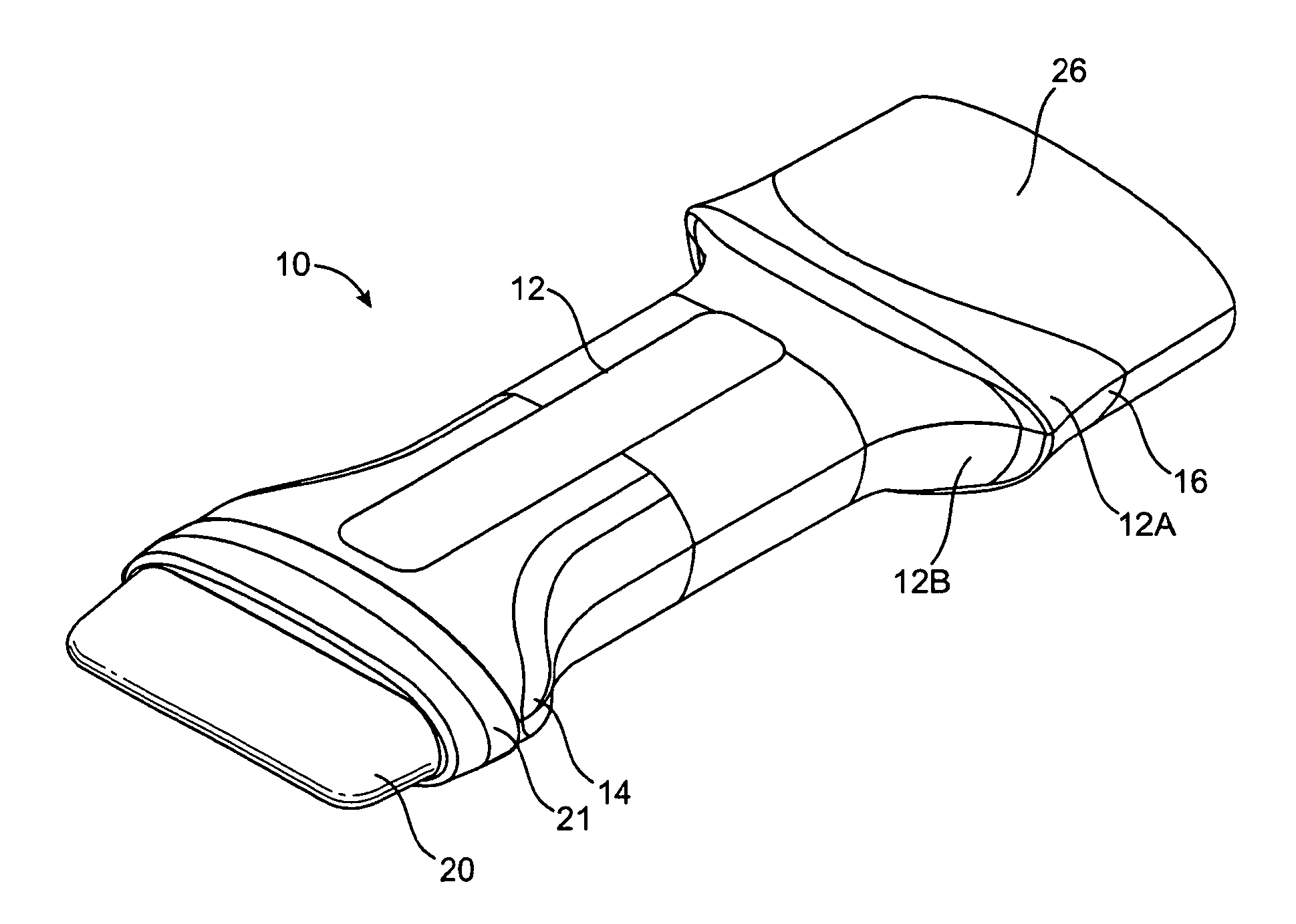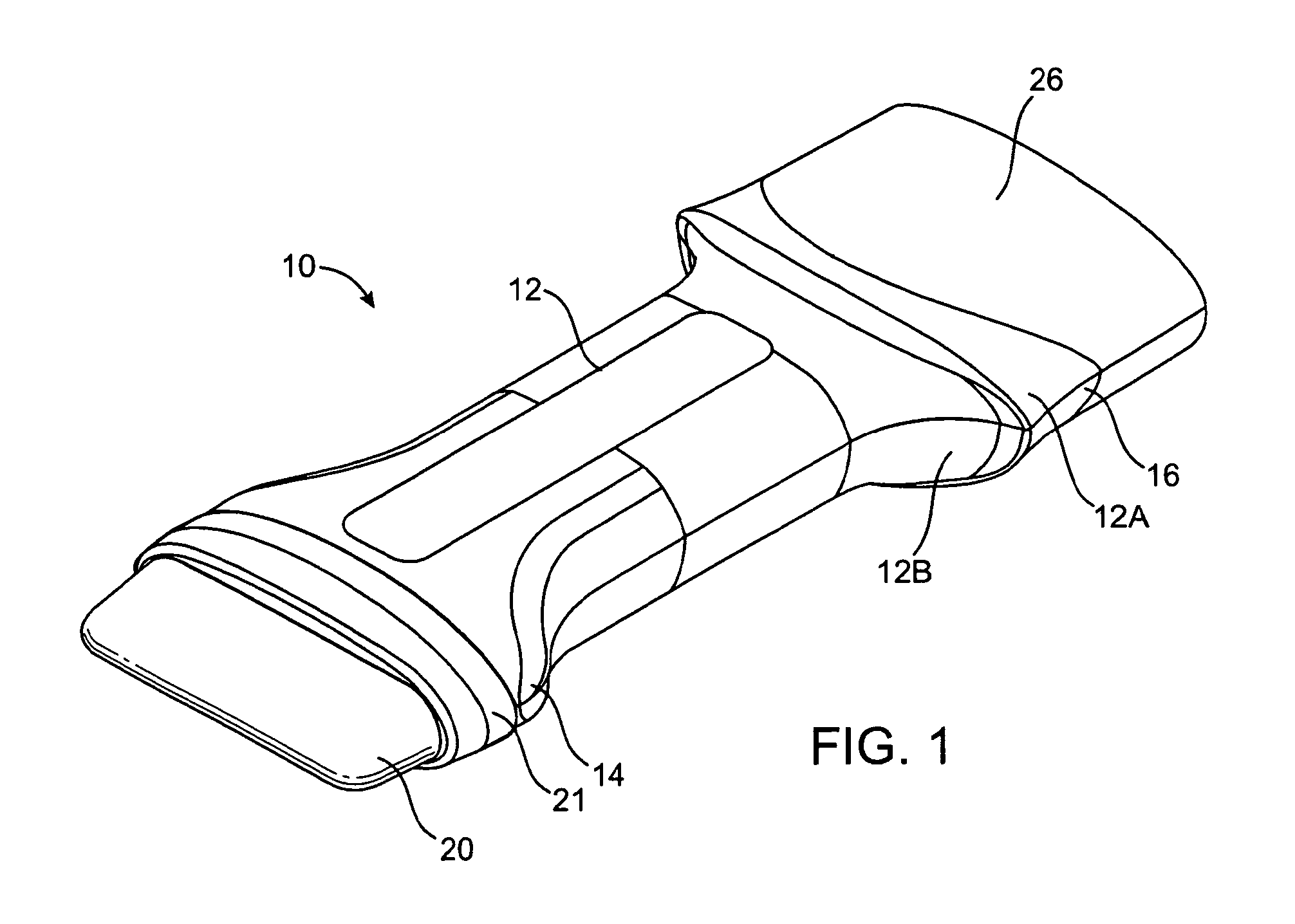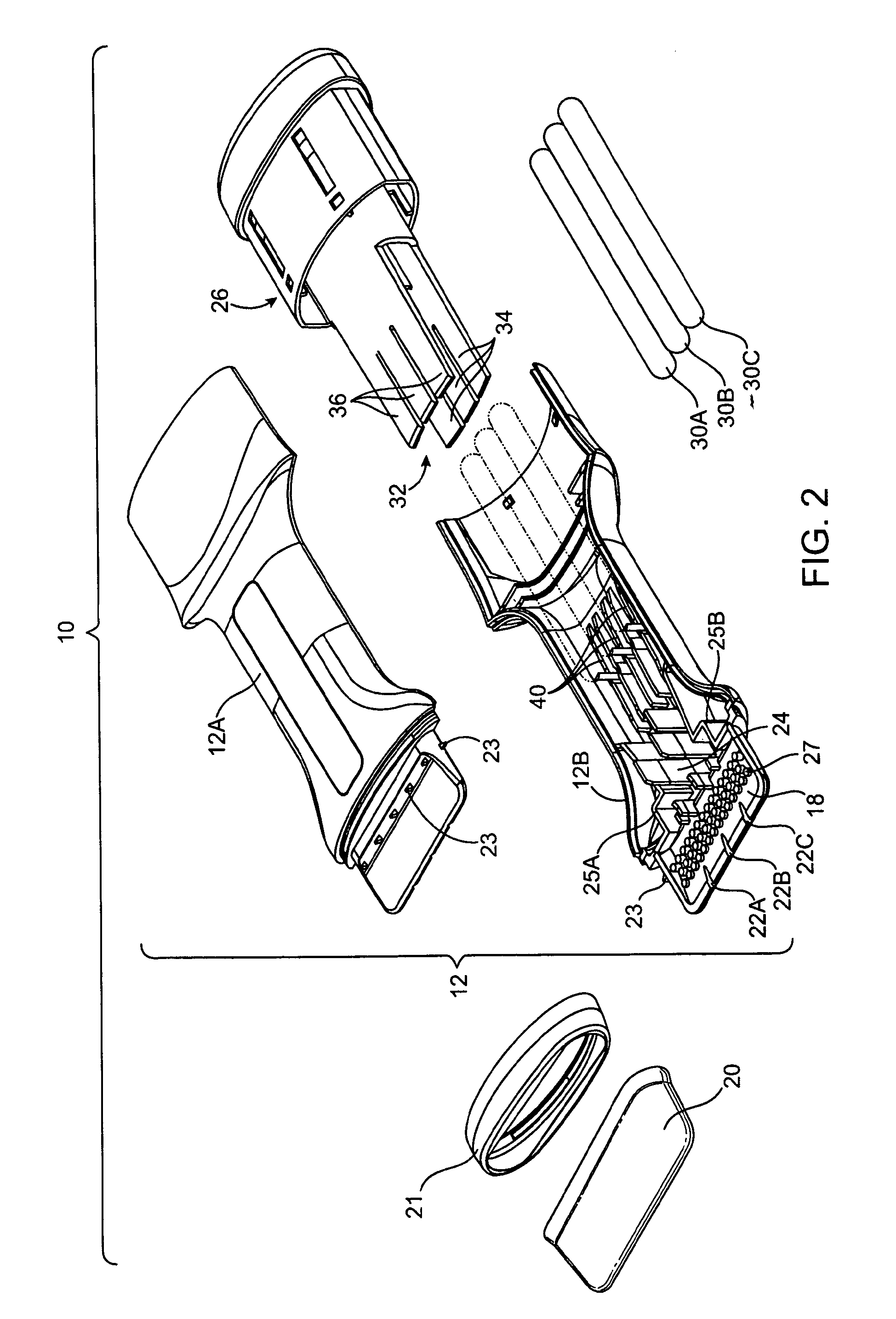Liquid applicator and method of use
a liquid applicator and liquid technology, applied in the field of liquid applicators and methods of use, can solve the problems of surgical incising drapes, limiting the general applicability of drapes, and increasing the risk of infection
- Summary
- Abstract
- Description
- Claims
- Application Information
AI Technical Summary
Benefits of technology
Problems solved by technology
Method used
Image
Examples
Embodiment Construction
[0056]Turning to the figures, an applicator 10 is shown. Applicator 10 includes a first housing 12. Housing 12 is typically two cooperating parts, top 12A and bottom 12B which snap together or more commonly are glued are fused into a single housing 12 during production of the application care. Housing 12 has a first (“front”) end 14 and a second (opposite or “rear”) end 16. First end 14 terminates in a generally flat widened region 18 having a height “H” and a width “W”. As shown in FIG. 5, H and W are selected to provide an aspect ratio W:H of from about 2:1 to about 10:1 and especially from about 2.5:1 to about 8:1 and more especially from about 3:1 to about 6:1.
[0057]As shown most clearly in FIGS. 1 and 3, region 18 is covered with a conforming thin layer 20 of foam. This is a liquid-permeable (open celled) foam ranging in thickness from about 0.25 mm to about 5 mm and especially from about 0.50 mm to about 3 mm. The layer of foam may be adhered to region 18 but can also be merel...
PUM
 Login to View More
Login to View More Abstract
Description
Claims
Application Information
 Login to View More
Login to View More - R&D
- Intellectual Property
- Life Sciences
- Materials
- Tech Scout
- Unparalleled Data Quality
- Higher Quality Content
- 60% Fewer Hallucinations
Browse by: Latest US Patents, China's latest patents, Technical Efficacy Thesaurus, Application Domain, Technology Topic, Popular Technical Reports.
© 2025 PatSnap. All rights reserved.Legal|Privacy policy|Modern Slavery Act Transparency Statement|Sitemap|About US| Contact US: help@patsnap.com



